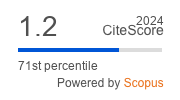Deep Learning and Competition in Psycholinguistic Research
DOI:
https://doi.org/10.29038/eejpl.2017.4.2.rtaKeywords:
deep learning, Competition Model, cues, machine learning.Abstract
MacWhinney, Bates, and colleagues developed the Competition Model in the 1980s as an alternate to Chomskyan models that encapsulate syntax as a special-purpose module. The Competition Model adopted the functional perspective that language serves communicative goals and functions. In contrast to the premise that knowledge of language is innate, the Competition model asserts that language is learned and processed through general cognitive mechanisms that identify and weight phonological, morphological, syntactic, and semantic cues in the language experiences of the learner. These weighted cues guide the language user in the comprehension and production of language forms. The present article provides background on the Competition Model, describes machine simulations of linguistic competition, and extends the principles of the Competition Model to new machine models and applications through deep learning networks.
References
- Bates, E. & MacWhinney, B. (1982). A functionalist approach to grammar. In E. Wanner & L. Gleitman (Eds.), Language acquisition: the state of the art. New York: Cambridge University Press.
- Bates, E., & MacWhinney, B. (1989). Functionalism and the competition model. In: The Crosslinguistic Study of Sentence Processing, (pp 3-76). B. MacWhinney and E. Bates (Eds.), New York: Cambridge University Press.
- Devescovi, A., D’Amico, S., Smith, S., Mimica, I., & Bates, E. (1998). The development of sentence comprehension in Italian and Serbo-Croatian: Local versus distributed cues. In: Syntax and Semantics: Vol. 31. Sentence Pocessing: A Cross-Linguistic Perspective, (pp. 345-377). D. Hillert (Ed.), San Diego: Academic Press.
- Hauser, M. D., Chomsky, N., & Fitch, W. T. (2002). The faculty of language: What it is, who has it, and how did it evolve? Science, 298, 1569-1579.
- Just, M. A., & Carpenter, P. A. (1980). A theory of reading: From eye fixations to comprehension. Psychological Review, 87, 329-354.
- Langacker, R. (1989). Foundations of cognitive grammar. Vol. 2: Applications. Stanford: Stanford University Press.
- Li, P., & MacWhinney, B. (2013). Competition model. In: The Encyclopedia of Applied Linguistics. C. A. Chapelle (Ed.), Malden, MA: Wiley.
- MacWhinney, B. (1987). The competition model. In: Mechanisms of Language Acquisition, (pp.249-308). B. MacWhinney (Ed.).Hillsdale, NJ: Lawrence Erlbaum.
- MacWhinney, B. (2001). The competition model: The input, the context, and the brain. In: Cognition and Second Language Instruction, (pp. 69–90). P. Robinson (Ed.), New York: Cambridge University Press.
- MacWhinney, B. (2008). A Unified Model. In: Handbook of Cognitive Linguistics and Second Language Acquisition, (pp. 341-371). P. Robinson & N. Ellis (Eds.). Mahwah, NJ: Lawrence Erlbaum Associates.
- MacWhinney B. (2012). The logic of the Unified Model. In: The Routledge Handbook of Second Language Acquisition, (pp. 211–227). S. Gass and A. Mackey (Eds.). New York: Routledge.
- MacWhinney, B. (2015). Multidimensional SLA. In: Usage-Based Perspectives on Second Language Learning, (pp. 22-45). S. Eskilde and T. Cadierno (Eds.). New York: Oxford University Press.
- MacWhinney, B., Bates, E. & Kliegl, R. (1984). Cue validity and sentence interpretation in English, German, and Italian. Journal of Verbal Learning and Verbal Behavior, 23, 127-150.
- MacWhinney, B., Leinbach, J., Taraban, R., & McDonald, J. (1989). Language learning: Cues or rules? Journal of Memory and Language, 28, 255-277.
- McClelland, J. L., & Rumelhart, D. E. (1986). Parallel Distributed Processing. Explorations in the Microstructure of Cognition. Volume 2: Psychological and Biological Models. Cambridge, MA: MIT Press.
- Presson, N. & MacWhinney, B. (2011). The Competition Model and language disorders. In: Handbook of Psycholinguistic and Cognitive Processes, (pp. 31-48). J. Guendozi, F. Loncke, and M. Williams (Eds.). New York: Psychology Press.
- Sokolov, J. L. (1988). Cue validity in Hebrew sentence comprehension. Journal of Child Language, 15, 129-156.
- Taraban, R. (2004). Drawing learners’ attention to syntactic context aids gender-like category induction. Journal of Memory and Language, 51(2), 202-216.
- Taraban, R. (2017). Hate, white supremacy, PTSD, and metacognition. In: Improve With Metacognition [online]. L. Scharff, A. Richmond, & J. Draeger (Eds.). Retrieved from: www.improvewithmetacognition.com.
- Taraban, R., & Kempe, V. (1999). Gender processing in native and non-native Russian speakers. Applied Psycholinguistics, 20, 119-148.
- Taraban, R., McDonald, J., & MacWhinney, B. (1989). Category learning in a connectionist model: Learning to decline the German definite article. In R. Corrigan, F. Eckman, & M. Noonan (Eds.), Linguistic categorization (pp. 163-193). Philadelphia: Benjamins.
- Taraban, R., & Roark, B. (1996). Competition in learning language-based categories. Applied Psycholinguistics, 17, 125-148.











 Creative Commons «Attribution» 4.0
Creative Commons «Attribution» 4.0